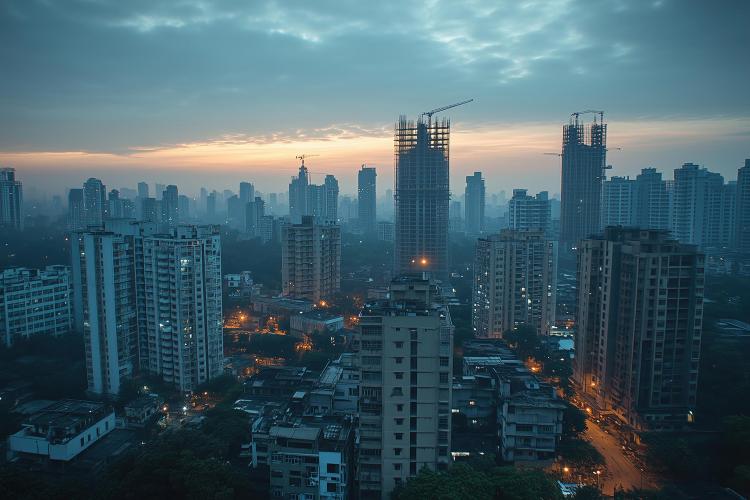Which one do you prefer? High Rise or Low Rise Buildings

Choose wisely where you live. You must have heard this advice multiple times. Where we live greatly affects our upbringing and lifestyle. And when it comes to selecting a residential space, it is acceptable to think through the positives and negatives of any property.
One question that people should consider more often than they do is, which building type to prefer, high rise or low rise?
High-rise buildings are usually more than ten floors and overlook the cityscape. These are often filled with modern amenities and usually are space for offices, residential use, or hotels. Low-rise buildings, on the contrary, are of a shorter height. These provide more intimate and community-oriented surroundings. Low-rise buildings offer design flexibility compared to high-rise buildings.
Ultimately, the best choice depends on individual priorities and values, as well as factors such as budget, location, and desired lifestyle.
Advantages of High-Rise Buildings
- Urban Lifestyle and Connectivity- High-rise buildings offer an urban lifestyle. These buildings are in urban centres, giving easy access to amenities like malls, grocery stores, restaurants, and entertainment centres. It enhances the quality of life. The biggest advantage of high-rise buildings is the reduced commutation time with proximity to public transportation.
- City Views- High-rise buildings overlook the entire city. It provides a panoramic view of the city. The upper floors of the building are the highlights with spaciousness and a sense of grandeur. Additionally, the urban lifestyle associated with high-rise living can appeal to those who enjoy the energy and excitement of city life.
- Higher Property Values- Most of the time high-rise buildings are present in the city’s desirable locations. The value of these places appreciates over time. The proximity to amenities, transportation, and the prestige associated with high-rise living can contribute to increased property values.
- Modern Amenities and Facilities- High-rise buildings typically offer a range of modern amenities and facilities, such as swimming pools, fitness centers, rooftop gardens, concierge services, and secure parking. These amenities can enhance the quality of life for residents.
Disadvantages of High-Rise Buildings
- Higher Costs- Renting or purchasing a unit in a high-rise building often comes with a higher price tag compared to lower-rise options. This is due to factors like location, amenities, and the perceived value of living in a high-rise.
- Noise Pollution- Since high-rise buildings are present in densely populated areas, this can lead to noise pollution from traffic congestion, construction, and neighbouring businesses. Additionally, traffic congestion can be a significant issue, especially during peak hours.
- Limited Outdoor Spaces- While high-rise buildings offer shared outdoor spaces like rooftop gardens or patios, individual units typically have limited outdoor space. This can be a disadvantage for those who value having a private outdoor area.
- Safety Concerns- High-rise buildings, especially taller ones, can pose safety concerns such as fire hazards and elevator malfunctions. While modern building codes and safety measures are in place, these risks cannot be eliminated.
Advantages of Low-Rise Buildings
- Quiet and Peaceful Environment- Low-rise buildings offer a more serene atmosphere, free from the noise and hustle of urban areas.
- More Outdoor Space and Privacy– Residents of low-rise buildings typically enjoy larger yards, balconies, or patios, providing ample outdoor space for relaxation and privacy.
- Lower Cost of Apartments- Low-rise buildings generally have lower construction and maintenance costs, which implies more affordable rent or purchase costs.
- Community Habitat- Low-rise buildings are usually a part of a township or complex community. People from various backgrounds reside together. It offers a community experience. The smaller, more intimate nature of low-rise buildings can foster a stronger sense of community among residents.
- Energy efficiency- Low-rise buildings may be more energy efficient than high-rise buildings due to their smaller size and lower energy consumption for heating, cooling, and lighting.
- Safety- Lower-rise buildings may be considered safer during emergencies such as fires or natural disasters, as evacuation is often easier and quicker.
Disadvantages of Low-Rise Buildings
- Limited Access- Sometimes low-rise buildings offer limited access to amenities and transportation facilities. Access to public transportation, including buses, trains, or metros due to limited availability. Residents may rely more heavily on personal vehicles for transportation.
- Lack of City Views and Urban Lifestyle- Low-rise buildings typically offer less expansive views of the surrounding city compared to high-rise buildings. The urban lifestyle and buildings go hand in hand. However such experiences are less accessible in low-rise neighbourhoods.
- Potential for Lower Property Values- If an area is experiencing development or gentrification, high-rise buildings may be more desirable and command higher property values. It may be perceived as less desirable by some buyers, leading to lower property values.
- Fewer Modern Amenities and Facilities- The smaller size of low-rise buildings may limit the range of amenities that can be offered. Maintaining a low-rise building can sometimes be more expensive than maintaining a high-rise, due to factors like landscaping and individual unit maintenance. Low-rise buildings may have fewer modern amenities, such as fitness centers, swimming pools, or concierge services, compared to high-rises.
Factors to Consider Before Choosing Between High-Rise and Low-Rise Buildings
When deciding between a high-rise or low-rise building, several factors should be carefully considered to ensure the best fit for your lifestyle and preferences.
High-rise buildings- often offer a more urban lifestyle, with access to city views, modern amenities, and convenient transportation options. However, they may also come with higher costs, noise pollution, and limited privacy.
Low-rise buildings- typically provide a quieter and more community-oriented environment, with lower costs and potentially more privacy. However, they may have limited access to amenities, lack city views, and potentially have lower property values.
Here’s a breakdown of the key factors to consider:
- Cost: High-rise buildings generally have higher costs associated with purchase or rent, as well as maintenance fees. Low-rise buildings may be more affordable, especially in areas with lower property values.
- Lifestyle: High-rises offer a more urban lifestyle with easy access to amenities and transportation. Low-rises provide a quieter and more community-oriented environment.
- Amenities: High-rise buildings often have more modern amenities like fitness centers, swimming pools, and concierge services. Low-rise buildings may have fewer amenities or none at all.
- Privacy: Low-rise buildings may offer more privacy due to fewer units and less noise pollution. High-rise buildings can have limited privacy, especially on lower floors or with neighbouring units.
- Views: High-rise buildings typically offer city views, while low-rise buildings may have limited views or none at all.
- Transportation: High-rise buildings are often located in areas with better transportation options, such as public transit and highways. Low-rise buildings may have limited transportation options, especially in suburban areas.
- Safety: Both high-rise and low-rise buildings can be safe, but it’s important to research the specific neighbourhood and building security measures.
By carefully considering these factors, you can make an informed decision about whether a high-rise or low-rise building is the best choice for your needs and preferences.
Make the Right Choice
Choosing between a high-rise or low-rise building is a personal decision that depends on your individual preferences and lifestyle. Both types of buildings offer unique advantages and disadvantages. High-rises provide urban living, city views, and modern amenities, while low-rises offer a quieter environment, more outdoor space, and potentially lower costs.
Ultimately, the best choice for you will depend on factors such as your budget, desired lifestyle, and priorities. Take the time to carefully consider your options and weigh the pros and cons of each building type to make an informed decision about where you want to live.
Did you know about Royal Greens?
Immerse yourself in the finest living at Vijay Nagar’s prime destination, Royal Greens!
Seize this golden opportunity to enhance your way of life.
At Royal Greens, embrace the ultimate blend of opulence and nature’s splendour. Nestled in the sought-after Niranjanpur locale of Vijay Nagar, our prestigious residential community offers a life of magnificence amidst lush, verdant surroundings. Wake up to the gentle embrace of sunbeams filtering through the abundant foliage, adorning your home with the vibrant hues of nature.
With a community that houses over 200 satisfied families, Royal Greens presents an array of 2 and 3-BHK flats, each graced with magnificent views that capture the essence of nature’s beauty. Our township seamlessly merges luxury and convenience, crafting an ideal sanctuary where indulgence and tranquillity coalesce. Join our esteemed residents in savouring the richness of life as you revel in the splendour of Royal Greens, an oasis where luxury harmonizes with nature’s calm.
What amenities await you at Royal Greens?
- A clubhouse filled with top-notch facilities
- Inviting swimming pool
- Convenient parking spaces
- Serene walking and jogging tracks
- Modern gymnasium
- Well-stocked library
- Leisure and recreation area
Explore the modernity, convenience, and comfort that this exceptional location offers. Make your move today for a brighter and more promising tomorrow!

